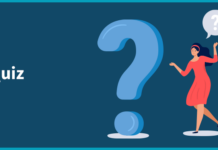
When a new programming language is launched, a discussion frequently ensues among some of the industry’s brightest minds, in which the language is contrasted to the one that has already developed its roots. In the IT industry, a buzz always spreads, and the new one is often compared to the current one of its kind in any field, whether it be functionality, syntax, core CPU and memory aspects, like GC time and everything.The debate between two languages that came out one after the other in a short period of time, namely Python and Perl, was one such case that attracted a lot of attention. Let’s discuss the differences between both languages.
Python vs. Perl
Perl is a high-level interpreted and dynamic programming language with a wide variety of applications. Larry Wall came up with the idea in 1987. Perl was designed to perform text processing tasks such as extracting the necessary information from a text file and converting it to a different format. It’s an open-source programming language for developing and integrating Unix-based software. Perl, like C programming, requires a semicolon to end a line. Perl is a complex programming language to understand.Our Perl homework help has helped students to develop a thorough understanding of the subject. This has also improved their realistic understanding of the topic on several concepts, as well as assisting them in quickly fixing bugs in code.
Python is a commonly used high-level programming language for general-purpose applications. Pythonists are a term for Python programmers. So, aspiring Pythonists, let’s dive into a sea of knowledge and master the Python programming language fundamentals. Python’s growth aimed to emphasize code readability. It is one of the most fundamental programming languages available. Without a solid programming history, anyone can begin learning Python.
The following are some main distinctions between Perl and Python:
| Characteristics | Perl | Python |
Introduction |
Perl is a high-level programming language that is widely used in CGI scripts. CPanel and Bugzilla are two well-known Perl projects. It was designed to replace complicated shell scripts. | Python is a popular high-level programming language for general-purpose applications. It has a wide range of Web Development applications, Machine Learning, Desktop Applications, and other areas due to its extensive library and support. |
Whitespaces |
Perl skips whitespaces. | Python deals with whitespaces, and if whitespaces are not used correctly, a syntax error is produced. |
File extension |
Perl Scripts are saved with the.pl file extension. Consider the file myDoc.pl | Python scripts are saved with the.py file extension. myFile.py is an example of a Python script. |
Blocks of Claims |
Braces are used in Perl to denote statement blocks. | Indentations denote the statement blocks in Python. |
Documentation and Remarks |
In Perl, we use # for inline comments, such as #Inline-Comment. | # is also used in Python for inline comments.
In Python, for example, #Inline-Comment |
Data Types |
Numeric, string, Scalars, Arrays, and Hashes are some of Perl’s data types. | Numeric, strings, lists, dictionaries, and tuples are some of Python’s data types. |
Concentrate |
Perl emphasizes support for basic tasks like report generation and scanning files. | Python emphasizes object-oriented programming and data structure design as well as other traditional methodologies. |
Perl or Python: which is better?
All languages are pleasant to work with and adaptable. In terms of the library, Users have also introduced many libraries to Python vs. Perl. I don’t think so.
Python is constraining because it does not have the same level of independence as PERL when it comes to implementing something (note that I said the same level’ – there is still some flexibility). Python’s power, in my view, is that it clamps down on the aspects of the language that may contribute to the chaos, without which we will not be able to live. I believe this makes for a smooth and clean language.
Conclusion
As you can see from the list above, there are several significant variations between Python and Perl. Both Python and Perl are suitable for the applications they target; however, Python is better than Perl as a first choice for a novice due to its fast and clean-to-understand code. When it comes to string manipulation, Perl outperforms Python. We’ve also listed some of the features and places where both programming languages can be used.





